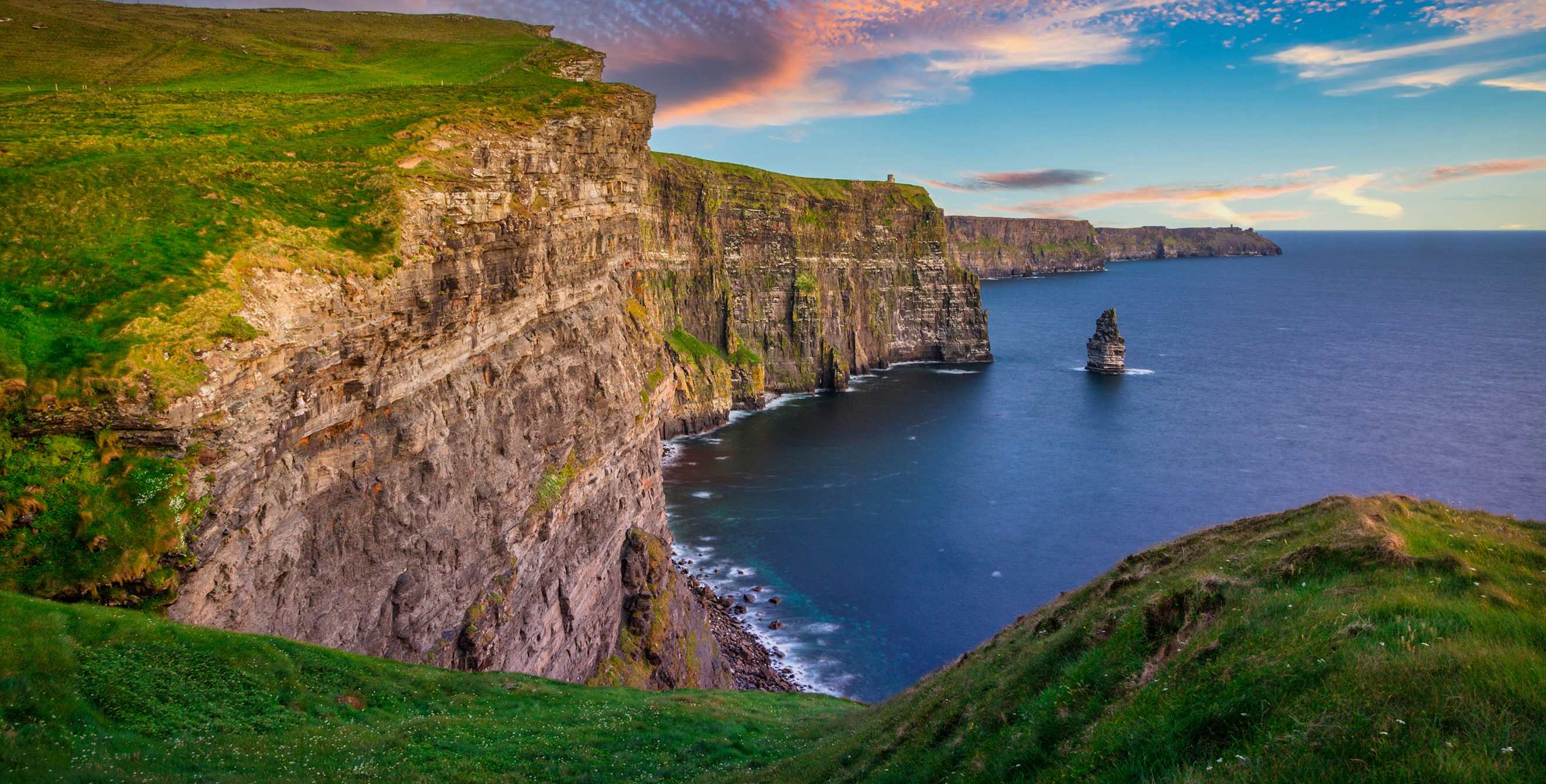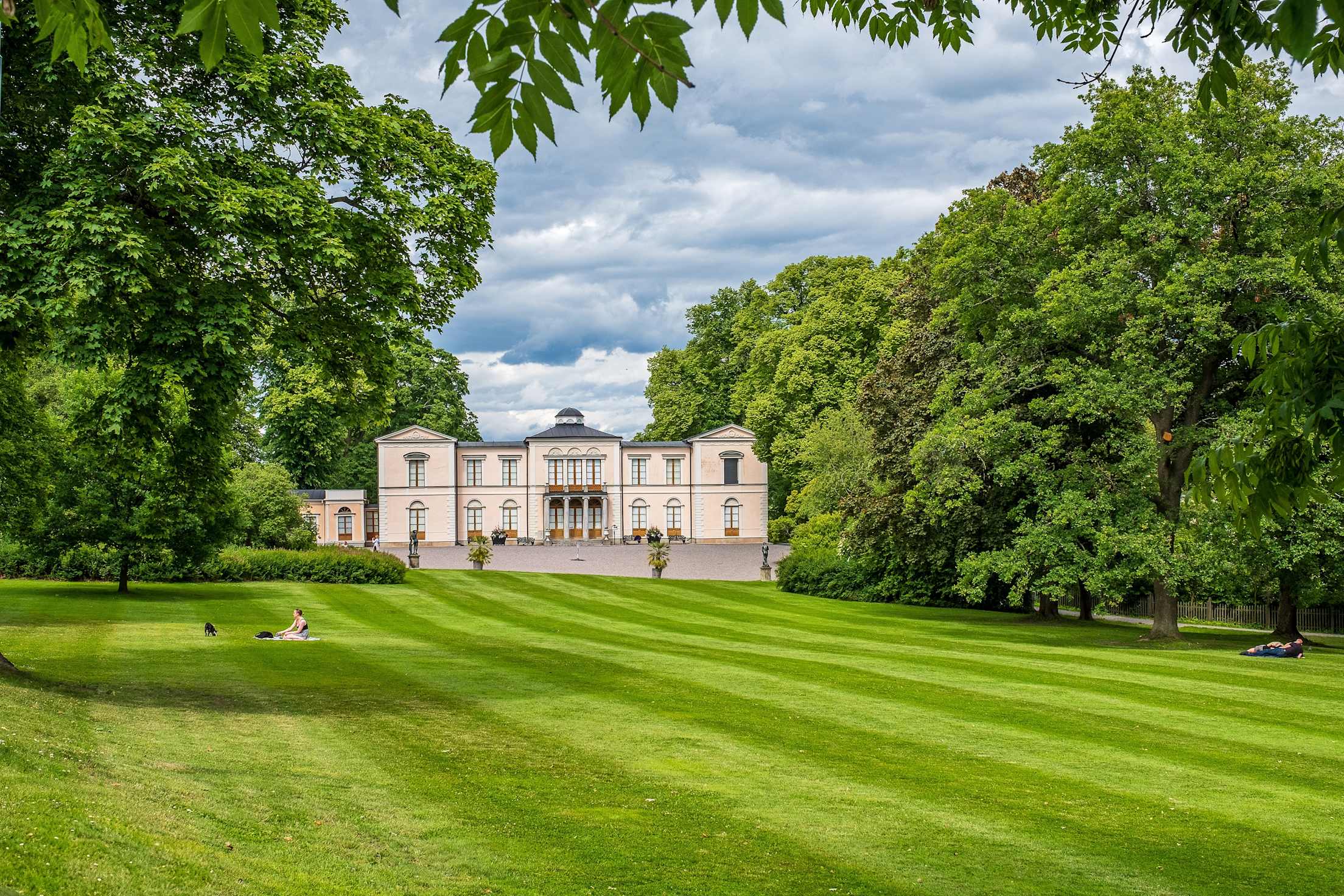
Where to Go to Escape Heat Waves in Europe
Spend the summer chilling in alpine meadows, splashy cities, and forested islands.

Europe—the world’s most popular travel region—is also the planet’s fastest-warming continent. With tourist hotspots turning into vast open-air bakeries, many travelers are, understandably, seeking “coolcations.”
The destinations spotlighted below all bask in reasonable and refreshing summer temperatures. Bonus: They’re also all focused on sustainability, helping to make Earth a cooler place for generations to come.
Explore artisanal culture on the Irish coast.
County Clare—where summer highs are typically in the 60s—has long been famous for proudly preserving traditional Irish music, crafts, and food. This year, Clare also became Ireland’s first countywide certified sustainable tourism destination, a designation from the Global Sustainable Tourism Council. Many green activities are centered in the dramatic Burren and Cliffs of Moher UNESCO Global Geopark. From May to August, you can see tens of thousands of puffins and other seabirds congregating here for nesting season as you amble a section of the 12-mile coastal trail or take a cliffside boat cruise. At Aillwee Cave, venture into the Burren’s fascinating underworld, marvel at a raptor-flying demonstration, and learn the art of falconry.
Dog lovers can’t miss Caherconnell Fort’s daily sheepdog demonstrations, when talented collies bring sheep back from the lunar-like Burren landscape. Music fans will delight in Doolin Music House, where both a local musician and a contemporary artist play traditional tunes and gab about Irish music in the intimate setting of their home.
Foodies are spoiled for choice along the Burren Food Experiences Trail. Burren Smokehouse offers short tours and deep dives into the history and practice of curing fish along with samplings of their organic artisanal smoked salmon. Cafe Linnalla serves ice cream and hosts tours of their coastal farm so you can experience the journey from cow to cone. Flaggy Shore Oysters schools visitors on shucking techniques and the environmental benefits of mollusks, followed by a tasting paired with organic wine. At Common Knowledge, forage for wild herbal tea, try your hand at the heritage craft of dry stone walling, and stay overnight on the 50-acre property.

Island-hop around Stockholm, Sweden.
The Stockholm Archipelago Trail, which officially launched in fall 2024, entices travelers to play in the pristine islands and islets just outside the capital, where summer days are filled with forest bathing and brisk dips in the Baltic Sea. The 168 miles of paths weave through 21 islands and the trail is organized into sections accessible by public ferries.
On the isle of Nåttarö, a car-free nature reserve, the 6.4-mile trail connects moss-shrouded forests and the archipelago’s most expansive sandy beach with a rustic holiday cottage site and guest harbor offering bike and kayak rentals. On Utö island, the 10-mile trail takes ramblers through a microcosm of the archipelago’s scenery, plus wetland and marine restoration sites, and plush inns like eco-conscious Utö Värdshus.
Nature also takes pride of place in Stockholm, the first city to be named a European Green Capital. This year, Stockholm’s Royal National City Park—the world’s first national urban park—celebrates its 30th anniversary with events scattered throughout summer. Visitors can enjoy concerts and commemorative tours, in addition to strolling through this oasis eight times the size of New York’s Central Park. On Djurgården island in the city center, delve into Sweden’s cultural treasures at the Skansen (an open-air museum) and ABBA The Museum. Then cool off in the island's clear bay waters, which were once used for Olympic swimming events.

Experience cool green living in the Netherlands.
With average summer highs hovering in the low- to mid-70s, the Netherlands has always been cool. But thanks to its dedication to hip, environmentally conscious urban design, this forward-thinking country keeps getting cooler. This year, Amsterdam is celebrating its 750th birthday with a variety of events on tap. In June, Future Fest brings sustainable fashion shows, exhibitions on innovation, and a street party on a 9-mile stretch of the ring road (the main motorway that circles the city) that will be temporarily converted into a forest. During August’s SAIL 2025, thousands of ships and dozens of musical artists will blow into town to celebrate Dutch maritime culture.
A 25-minute train ride from Amsterdam, Almere—the nation’s youngest city—doubles as an open-air museum for funky, eco-friendly buildings from world-renowned architects. Nearly half of Almere is water, so it’s ideal for canoeing or standup paddleboarding, when you’re not sauntering around spoonbill-populated ponds in the nature reserve. Rent a bike from the tourist information center and pedal through Almere’s Oosterwold district. Here, residents build their own quirky homes and commit to using half their land to grow food for themselves and the community, which is dotted with farm stands and organic eateries.
In the refreshingly cool port city of Rotterdam, a 45-minute train ride from Amsterdam, learn about the harbor district’s environmental innovations on a fuel-efficient Spido boat trip. Then pick up cheese and yogurt from Floating Farm, where cows live in a floating stable, and take a beer-tasting tour at neighboring Stadshaven Brouwerij. Both businesses base their production on circular economics, sharing spent grain and recycling rain and wastewater. At Floating Office Rotterdam, a carbon-negative coworking complex, dine at Putaine restaurant and dangle your toes in the natural outdoor swimming pool. Finally, bed down on a Wikkelboat—a floating tiny house with spectacular views of the water and skyline.

Traipse around Tyrol, Austria.
Thanks to breathtaking peaks, top-notch public transportation, and generous tourist amenities, Western Austria’s Tyrol region makes car-free coolcationing a breeze. In the charming Innsbruck region, visitors who stay two or more nights in numerous partner establishments get a Welcome Card offering free public transport and cable car rides. You’ll also get free guided weekly hiking trips to alpine lakes, mountainside meadows, and barefoot walking trails through mossy forests, with free bus connections. Take a thrilling ride on the Nordkette cable car to the top of Karwendel Nature Park, where you can sip local grüner veltliner overlooking alps and the verdant valley around Innsbruck. In town, pop into the Tyrolean Folk Art Museum’s replicated farmhouse rooms and stroll through the opulent 15th-century Imperial Palace (Hofburg) and gardens (Hofgarten).
A short train ride away, on the southwest corner of Karwendel Nature Park, the alpine village of Seefeld has been awarded the Austrian Ecolabel for sustainable tourism destinations. Guests staying in town at least one night can pick up a Plateaucard offering free public transport. The card also gives travelers free and discounted guided experiences, such as educational nature walks alongside glacier-blue rivers, trips to Seefeld’s former Winter Olympics venues, craft beer tasting, forest bathing, and walks with alpacas on the wildflower-speckled plateau.
Get more out of your vacation: Book through AAA Travel for exclusive Member benefits.